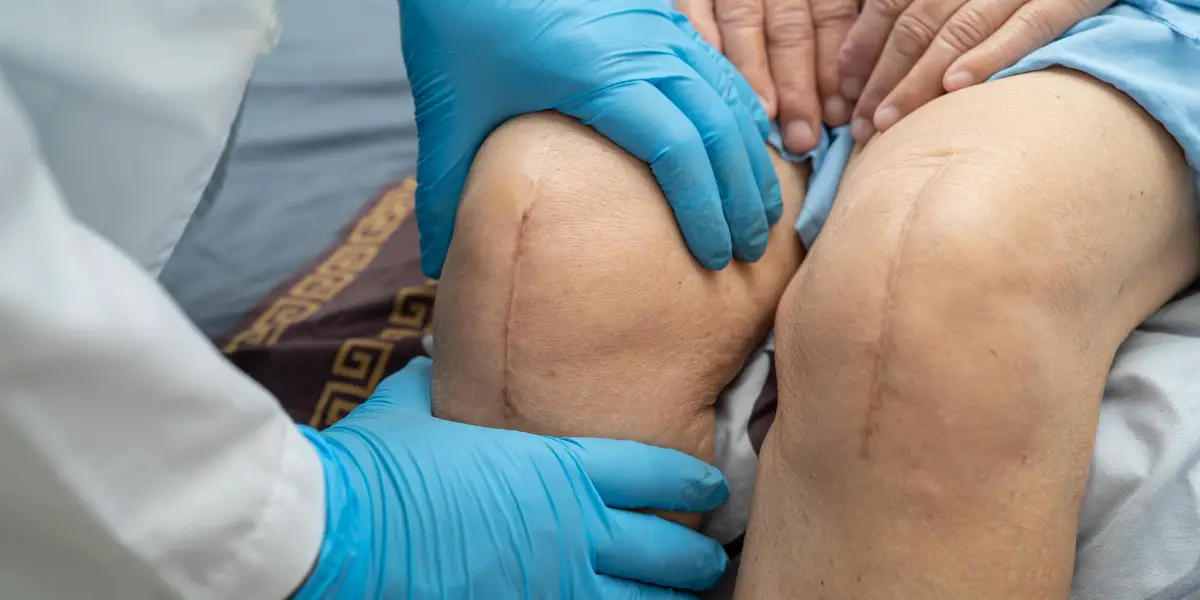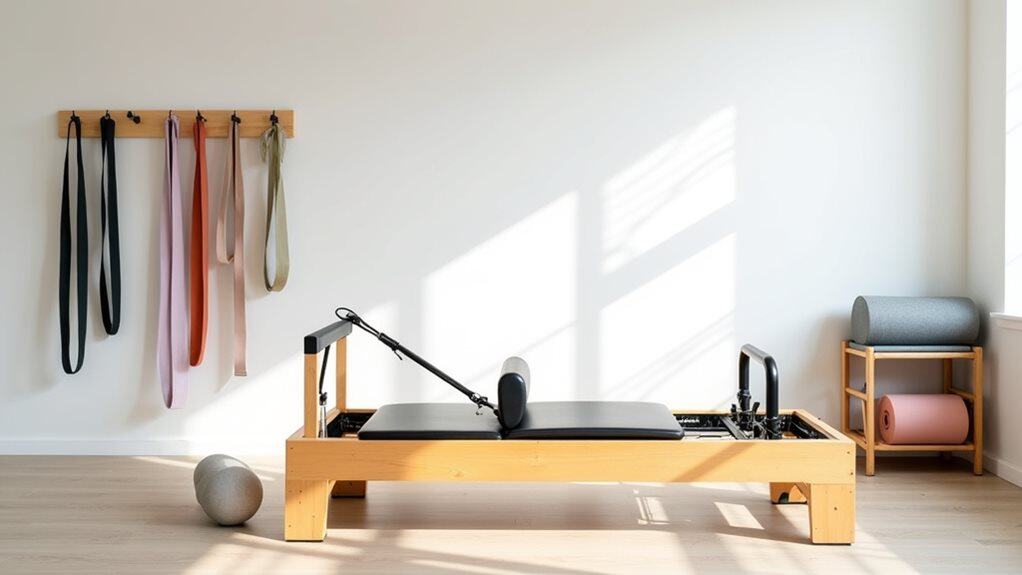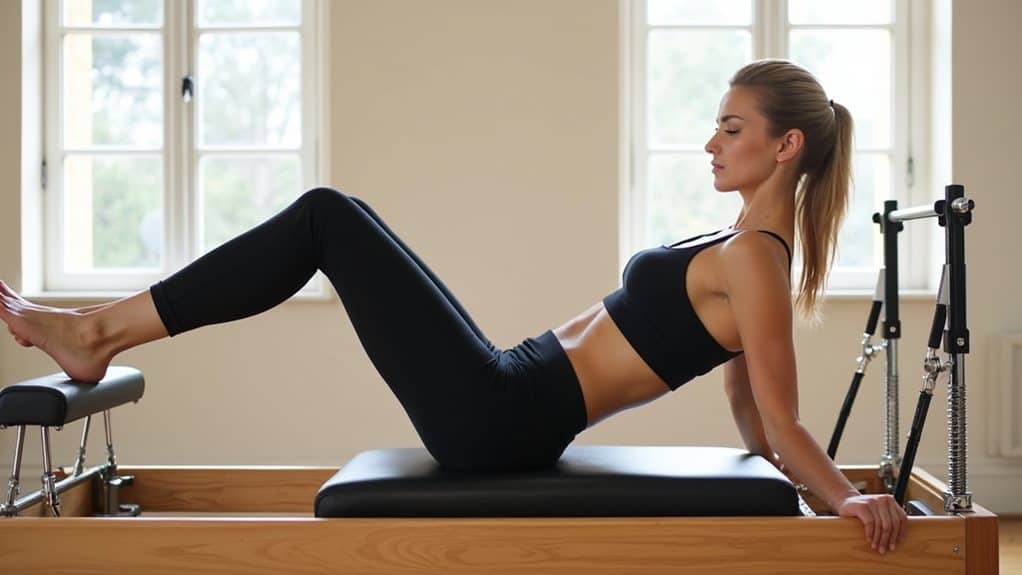If you’ve just had a total knee replacement and live an active life, staying patient and following the slow process of physical rehabilitation can be challenging. Letting your knee heal completely is essential, but many forms of physical therapy can speed up the process.
It is safe to do Pilates after a knee replacement as quickly as three to six weeks after surgery. It is entirely safe and can even be beneficial. The Pilates training should begin extremely gently and increase in difficulty as the person gains strength, balance, and core strength.
A knee replacement is tricky to deal with, but it can be overcome with time, proper rehab, and a responsibly-paced Pilates program. In the rest of this article, I’ll explain the progressive difficulty structure of a Pilates rehab program, how a good Pilates program helps with the mental aspect of recovery, and I’ll provide a timeline of knee replacement recovery as well.
Knee Replacement Recovery Timeline
If you know you are going to have knee replacement surgery soon, one of the best things you can do is begin practising Pilates immediately. Specific Pilates exercises can target muscles around the knee to strengthen them before surgery.
Pilates is great for your core and your back as well. Strengthening those large muscle groups prior to having knee replacement surgery will make it easier to stand upright after the surgery. A strong back and core will keep you during your recovery.
Patience is essential when you’ve had a knee replacement. The first week of recovery will be rough, and you will require some help performing some everyday tasks. You will likely be using a walker to get around. You will mostly want to be resting during this time.

Soon enough, though, you will be able to stand on your own and walk around without help. During this second week, you will start to regain some strength and flexibility in your knee. If you are recovering well and can walk on your own without a cane, your surgeon will probably recommend physical therapy.
When you talk to your doctor, ask them about incorporating some gentle Pilates routines into your recovery. Many physical therapists use some Pilates techniques, but studies show that patients who had knee replacements and practised Pilates in addition to routine physical therapy schedules had better recovery outcomes.
Sticking to a gentle Pilates program in addition to your recommended physical therapy can speed up your recovery. By the third to fourth week of consistent training, you should be noticing a significant improvement in the mobility of your knee.
As your recovery progresses, your knee will begin to feel more stable and a lot stronger. This will allow your life to return to a somewhat normal state, but staying committed to your Pilates training and physical therapy is crucial to ensure your knee heals correctly.
By the time you reach weeks five to seven, you should be able to transition from physical therapy-type exercises to more traditional training-type activities. This is when you can learn to trust your knee when putting some light stress on it.
Twelve weeks is the recognized total recovery time for a knee replacement. After twelve full weeks of following the doctor’s orders and rehabbing your knee correctly, you should be back to normal.
Of course, you should still be careful, but you can work your way back to where you were in your Pilates training with patience and diligence.
Pilates Recovery Training Structure
It’s vital to take it slow and work your way back to full strength after a knee replacement. You must not push yourself too much. Doing so will put you at risk for re-injury. Progressing your physical therapy and Pilates routine as your knee heals will help avoid setbacks.
A few weeks after the surgery, when you start rehabbing your knee, you will only be doing elementary exercises with an incredibly low risk of injury. These will be beginner-level exercises that involve only one or two body parts. Your first few Pilates sessions after your knee replacement should put as little stress on the joint as possible.
You should take it very easy on your knee for the first four to six weeks. You should be using your Pilates sessions to work on the more technical and therapeutic aspects of Pilates rather than trying to get a workout. Focus on the breathing aspect and try to use different muscle groups.
I filmed this seated Pilates workout for those who want to work their core muscles without having to get up and down on the floor.
When you think about progressing in your Pilates training during your recovery, you should always consult your surgeon or primary care physician before doing so. Any increase in intensity should be cleared with a physician first.
After six weeks, you should be able to step up the intensity of your Pilates routines. Only do this if you are comfortable with it and your doctor says it is okay. At this stage, you will probably feel like you’re returning to your old self, but you still need to be cautious.
Even if you’re experienced with Pilates, I would suggest that during the recovery process you consider yourself a beginner again. Stick to the basics and stop immediately if you feel any knee pain.
Progressing in intensity too quickly can cause your knee’s healing to regress. When you are recovering from a major surgery like this, you will need to refrain from overworking your knee and give yourself adequate rest time between workouts.
When practising Pilates in the months after your knee replacement, you should still focus on your form and breathing.
Mental Health Benefits of Pilates During Recovery
Recovering from a knee replacement can take a toll on you mentally. The rehab process is long and requires a lot of patience, and certain aspects of the recovery can become overwhelming.
If you’re used to being totally independent, and living an active lifestyle, you’ll need to learn to depend on others for a while after you have your knee replaced.
You will be stuck in bed for the first few days after the surgery. Try to have patience with yourself during this recovery period, since the less you take care of yourself, the longer your recovery period will last.
As you start to regain physical function and are cleared for simple exercise routines you’ll find that Pilates can help keep you in good spirits as you recover, since it can be an excellent way to de-stress the mind and body, much like yoga.
Our mental health impacts our physical health, doing Pilates and your physical therapy will make you feel good, and you will recover faster than someone who is just going through the motions of physical therapy and neglecting to take it seriously.
Pilates can decrease anxiety, increase blood circulation and oxygen flow, and decrease inflammation. Most of the stress-reducing effects of Pilates come from the breathing control aspects of it.
Pilates is one of the most relaxing ways that you can exercise. It is essential to be calm and anxiety-free when you are recovering from major surgery; gently easing your way back into the practice of Pilates is a great way to keep your mind at ease.
Conclusion
It is not only safe to practice Pilates after a knee replacement, but it can also be very beneficial to your rehabilitation. It is also good to practice Pilates before your surgery to prepare for the procedure.
Pilates helps gently strengthen muscle groups essential for proper blood flow, posture, and other areas that more traditional workouts ignore.
Remember that everyone’s situation is unique to them, and you should always consult your doctor or physical therapist to check any exercise program you plan to undertake won’t cause issues with your healing process.
Sources
- Healthline: Knee Replacement Recovery Time: What to Expect in the First 12 Weeks
- National Library Of Medicine: Pilates Training for Use in Rehabilitation after Total Hip and Knee Arthroplasty: A Preliminary Report
- Body Organics: Knee Replacement Exercises Pre And Post Surgery
- Taylor & Francis Online: Do Pilates-based exercises following total knee arthroplasty improve postural control and quality of life?
- Pilates Moves You: Is Pilates Low-Intensity?




